Chloe Jones A2 Media Studies
Saturday 1 January 2011
1. In what ways does your product use/develop/challenge forms and conventions of the real media products?
When creating a media product, it is important to continuously have the codes and conventions of real media products in the back of my mind as this allows me to make sure I have not developed or challenged them in any way.
Framing of Interviews

Our Product

http://www.channel4.com/programmes/one-under/4od
One of the codes and conventions of a documentary was the framing of interviews when filming them, the interviewee must be framed on either the left or right hand side and not look directly at the camera. The images above show how we interpreted this framing from a real channel 4 documentary and used it in our own documentary. Our product is framed to the right looking slightly to the left which is the same as the Channel 4 documentary, 'One Under'. Our interviewee has been framed with a montage of different make-up which represents her as being youthful as bright coloured images have been used in the mise-en-scene, this signifies our target audience as we hope they show an interest in make-up with it also being a youthful target audience. On the other hand the mise-en-scene of the channel 4 documentary is very dark and plain however, this represents the serious subject matter of the topic being spoken about.
Graphics

Our Product

http://www.channel4.com/programmes/jess-britains-youngest-sleepwalker/4od#3132709
Another important convention of documentaries is the use of graphics as they are always positioned at the bottom of the screen and do not go onto the interviewee’s face as this may distract the audience. The graphics are an essential part of the documentary as they allow the audience to know who is on screen and it allows the interview to make more sense to them. For example if we didn’t use graphics on our interview with Jack Brislen then the audience may not have known he was a male makeup wearer. The graphics shown in the image from our documentary are used in order to illustrate to our audience who is on screen, this is the same as in the Channel 4 documentary, 'Jess: Britains Youngest Sleepwalker?'. It is also important that the name of the person is bigger than the reason for them being in the documentary, as you can see the name 'Jack Brislen' from our product has a larger font than where it says 'Male make-up wearer', which follows the Channel 4 documentary as the name 'Dr. Paul Gringras' has a larger font than 'Consultant, Evelina Children's Hospital'.
Cutaways
-
http://channel4.com/programmes/bodyshock/4od#3105551
When looking at documentaries, one of the main codes and conventions is the use of cutaways as they are what allows the documentary to flow well when looking at the transitions between shots. When the make-up specialist is talking about the different make-up for different skin types we used a cutaway which was taken from inside a makeup department as it allows the audience to relate to the documentary more effectively and adds a new dimension to interest the audience. In the professional Channel 4 documentary 'I'm Turning Into a Giant', they use a cutaway of the woman in hospital when talking about the her every day stuggle with constantly growning in order to show the audience an insight into her life. We have embraced the codes and conventions of real media products as we use cutaways when necessary in order to keep the audience interested in our documentary. Cutaways don't always have to be used during an interview, they can also be used whilst a voice over is taking place. As our documentary is an expositary documentary, it is extremely important for the camera crew to not be seen, as a result of this the cutaways came in useful to hide this when nesesary.
Mise en scene
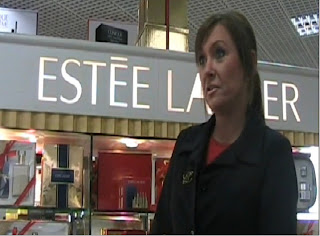
Our Product

http://www.channel4.com/programmes/newlyweds-the-one-year-itch/4od#3117585
Throughout a documentary, mise en scene is extremely important. To the viewer, everything on the screen infront of the camera illustrates to them what is going on, therefore the mise en scene needs to be throught out carefully in order to signify to the audience what it is about. A dull mise en scene of a dark brick wall could connote to the audience a serious issue and creates a gloomy atmosphere, whereas a bright mise en scene such as the beach could connote to the audience a happy, peaceful topic. The image of my production uses the lighting from inside a make-up shop which connotes everyday shopping, however the makeup stand which is behind the interviewee conveys the idea of makeup to the audience, also the idea of a professional due to the interviewee's smart clothing. The professional Channel 4 production of 'The One Year Itch' also uses the natural lighting from the room, and the interviewee is in her bedroom which creates a homely atmosphere and links to the topic of weddings as this is where the bride may get ready.
Use Of Music
Use of Sound
Our documentary is made up of both diegetic and non-diegetic sound. All of the sound tracks which we have used are non-diegetic and have been added in during the editing process of our product.
Use of Archive Material

Above is a screengrab taken from the editing of our documentary, it shows some of the archive footage which we used in our documentary. Archive material is important in a documentary as it tends to be used as a cutaway. The use of archive footage adds a new dimension to the documentary allowing for it to appear more valid as this material has been used before. We used archive material of male celebrities who wear makeup, as we found it hard to get many cutaways for this part and the archive footage was very useful when introducing the topic of male makeup.
Voiceover
Below is an image of our voiceover script with corrections:

We have used a voiceover in parts of our documentary as this is another one of the main codes and conventions of a Documentary. We used a female voiceover as we feel it relates to our topic more effectively with it being make-up, also our main target audience is females and from our feedback our audience would prefer to hear a female voiceover rather than a male one. The voiceover came to be very important as it links the narrative together. I feel that the tone of the voiceover works well, as it is upbeat and sounds professional, therefore it grabs the audiences attention.
Narrative Structure
Our documentary has a linear structure, this being the most basic, meaning it is the easiest to follow. Because our product is an expository documentary it means that the audience will constantly find things out about the subject chosen, in our case this is make-up.
My final media product follows the codes and conventions of a documentary when looking at narrative structure. Our opening sequence is followed by articles such as interviews and archive footage. We have used music played throughout the background of our documentary which also follows the codes and conventions of real documentaries, this music relates to our topic of make-up due to its genre being dance and pop therefore creating an upbeat atmosphere. We have also used a female voice over which we used due to audience feedback collated in the research process.
2.How effective is the combination of your main product and ancillary tasks?
The radio advert and documentary are linked together due to the main feature of using the same voice in each for the voiceover. The radio advert is fun and upbeat which is reflected in our documentary due to some of the fast paced editing and the choice of music which appeals to our target audience. Both of the ancillary tasks are also linked as they both use the same title and scheduling, they also use the same slogan, 'Is it all it's made up to be?', which relates to the documentary as it conveys the topic makeup to the audience. The title is eye-catching as is is asking whether make-up is all it's made up to be however, it gets the audience thinking what this question may be about as it intrigues them. Below is an image of our slogan taken from our print advert.

This slogan is then repeated through the use of the voiceover in both our documentary and radio advert. It is clear that the print ad is for a newspaper due to the page setup being landscape as it follows the codes and conventions of real channel 4 print ads. Below are images of which newspapers our print ad would easily fit into.
We can't advertise our radio advert on any of the BBC radio stations as these are only for BBC television programmes and with ours being a Channel 4 documentary this couldn't happen. Due to this we have selected a range of national aswell as commercial radio stations which would be suitable for our target audience. The stations we have used are widely accessible to the public, which allows all listeners to be targetted.
Our radio advert will be scheduled to be broadcasted on weekdays at the prime times of 7am-9am and 4pm-6pm as this is when the majority of people listen to the radio, due to it being when they are travelling to and from work, school or college. The weekend is also a good time to broadcast our radio advert as this is another prime time for radio listeners. Therefore, it will be played throughout the day in order to catch people who are on the move, doing shopping etc. The radio advert will get lots of attention from the audience as it uses an extremely catchy song which is a big hit right now in the current day chart.
3.What have you learned from your audience feedback?
Audience feedback Questionnaire for The truth behind the slap.
1./On a scale of 1-5 (1 being the highest) how informative is the documentary?
..............................................
2./ Was the documentary interesting to watch ? (if not why?)
......................................................................................................................................................................................................................................................................................................................................................................................................................................................................................................
3./ Did the background music suit the documentary and the interviews? (if not why?)
......................................................................................................................................................................................................................................................................................................................................................................................................................................................................................................
4./ Does the documentary run through smoothly?
..................................................................................................................................................................
5./ Was the sound in each of the interviews easy to hear?
..................................................................................................................................................................
6./ Did you like the voice over that was used and did it suit the topic and the target audience? (If not explain why?)
......................................................................................................................................................................................................................................................................................................................................................................................................................................................................................................
7./ Did the opening sequence catch your attention and make you want to carry on watching? (If not explain why?)
....................................................................................................................................................................................................................................................................................................................................
8./ Where the images and archive footage used in the documentary suitable and used in the right places?
....................................................................................................................................................................................................................................................................................................................................
9./ Do all of the media texts (radio advert, Newspaper advert and Documentary) fit into the topic that was chosen? (if not please explain?)
......................................................................................................................................................................................................................................................................................................................................................................................................................................................................................................
10./ What would you rate the print Advert out of 10? (please circle)
1 2 3 4 5 6 7 8 9 10
11./ Would you watch the documentary after listening to the radio advert?
...........................................
12./ Do you think our documentary should be scheduled on channel 4? (please circle)
Yes No
Below are images we took of our selected group, all of which fitted into our target audience.

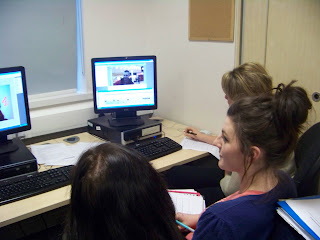
Questionnaire Results
Question 1 = 1-0, 2-8, 3-0, 4-0, 5-0
Question 2 = yes - 8
Question 3 = yes -6 , no-0, maybe-2
Question 4 = yes-8, no-0
Question 5 = yes-6, no- 2
Question 6 = yes-8, no-0
Question 7 = yes-8, no-0
Question 8 = yes-8, no-0
Question 9 = yes-8, no-0
Question 10 = 1-0, 2-0, 3-0, 4-0, 5-0, 6-0, 7-3, 8-3, 9-1, 10-1
Question 11 = yes-8, no-0
question 12 = yes-8, no-0












Our audience feedback is significant when looking back at the work we produced, as it allows us to see whether or not people would be interested in watching the documentary from listening to the radio advert, seeing the print advert and also from viewing the first five minutes of our documentary. It also allows us to gain feedback giving us advice on how to improve and telling us what works well for our target audience.
From our questionnaire feedback, the main thing we took from this was that all of the 8 people asked said they would like to watch our documentary after viewing the first 5 minutes, viewing the print advert and listening to our radio advert. This shows us that they all appeal to our target audience due to the upbeat music and with it being a topic most young females can relate to.
It was also interesting to notice that 75% of our selected audience said the sound from each of the interviews was easy to hear. I believe the reason for some of the sound not being as clear to hear was due to the setting of the interview, in particular the interview with the make-up specialist. With this interview in order to get the mise en scene we wanted it leaded to the sound not being as clear as we would like as it was filmed in a busy shop therefore, there was some background noise which affected the interview.
This questionnaire feedback confirmed that we had chosen to schedule our documentary on the right channel as all of our target audience said they thought it would fit into a Channel 4 scheduling.
I then went on to conduct feedback on individuals which fitted into my target audience. Below are images with what they said about our documentary, radio advert and print advert.
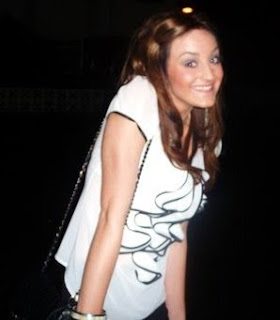
Gemma Hoey - 17 years old
"I thought the music worked really well, like how you repeated one of the songs from the documentary and put it into the radio ad."

Coral Evans - 16 years old
"I don't wear make-up, but I would definately want to watch the rest of this documentary as it covers all different areas about make-up. I love all the interviews, they link well together."
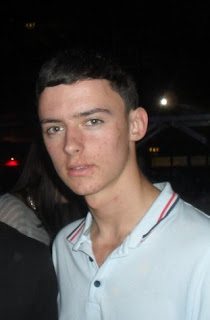
Josh Davies - 18 years old
"I loved the way it had an interview with a male make-up wearer, the music and cutaways work really well and bring the documentary together."

Sapphire Duffy - 19 years old
"I think it looks very professional and would definately want to watch the rest of it."
This feedback allowed us to see that more of our target audience would also watch our documentary. Real media groups also use focus groups to see if the documentary is at a high quality to be used hence the reason why we done the same. Its very important that the information we gather is from our target audience because thats who we're targeting and we want our documentary to be a success as a whole.
We also published our print advert, radio advert and documentary onto 'facebook' in order to gain a wider range of feedback about our products.
Below is a print screen of the comments which we received on facebook about our Print Advert.
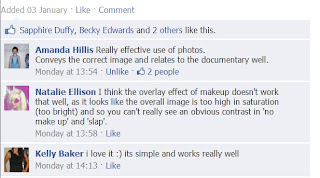
The feedback given from Natalie Ellison, shows how the image is too bright on the side with no make-up on, this could be improved by lowering the brightness on Photoshop.
Below is a print screen taken of the comments which we received on facebook about our Radio Advert.

This shows that the clips we used from our documentary have worked well in interesting our target audience and how the music has worked well, as it attracts our target audience.
Below is a print screen taken of the comments which we received on facebook about our Documentary.

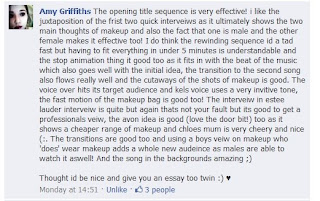
The feedback from Amy Griffiths really helped us to see where we could improve, with the bit at the beginning where the makeup being taken off is rewinded, she said it was a bit fast, which looking back I also agree with this comment. All this feedback from facebook has been very useful and lets us know that people would infact watch our documentary with it looking 'professional' and 'interesting'.
In relation to audience, this feedback tells us that our documentary, print advert and radio advert will appeal to our target audience with the music relating well to this young audience. It also tells us that we have used the correct scheduling as from the research questionnaire we used the answers given from our target audience in order to decide the time our documentary would be scheduled, therefore through feedback this has proven to be the correct timing to suit our target audience. Another important point to make is the scheduling in terms of the channel our products have been produced for as when I asked our target audience whether they thought it was suitable for channel 4, 100% said yes, which proves that our products look professional enough and follow the codes and conventions of real Channel 4 products.
Feedback is very important in real media institutions as it allows them to develop/change their work to fit in with the target audience and produce work at the highest standard possible. Without audience feedback, institutions would not know whether or not their products would be a success. Therefore I have learnt a lot from our audience feedback as it shown me how others look at our work, in a critical manner.
4.How did you use technology?

Still image camera
A still image camera was an essential piece of equipment which was used in the production of our documentary as it allowed us to keep photograph evidence of the progress of the production. We also used a still image camera when conducting our audience feedback in order to get photographic evidence for our evaluation.
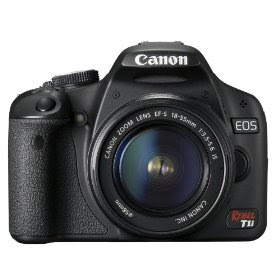
Video Camera
The video camera played the most essential part in making our documentary, as it was used to film all of our footage. We used the video camera to film interviews, cutways, voxpops and the opening sequence.
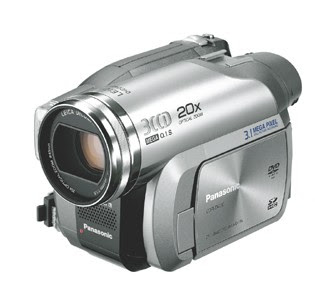

Tripod
The use of a tripod was extremely important when filming the footage for our documentary, it was especially important when filming interviews as it kept the camera steady throughout the interview, allowing for more professional camera work. When we did not use the tripod we got footage we couldn't use in our documentary as it was too shaky and hard to watch.
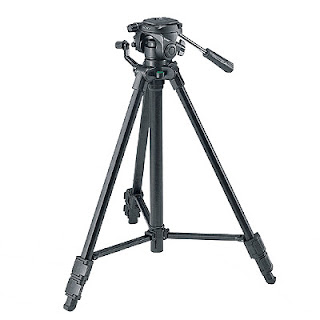
Microphone
The microphone was mainly used during an interview and was placed as near to the interviewee as possible without it being in shot of the filming. This helped improve the sound of the interview as it allowed for the interviewee's voice to be clearer and louder when used correctly. We also ensured that this was in use when we filmed our voxpops as this is an important feature of documentaries.
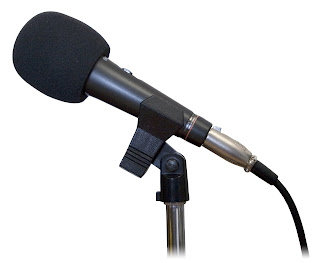
Dictaphone
I used a dictaphone in order to record my own voice to use in my evaluation. It is extremely easy to use and with it being lightweight I was also easily portable.
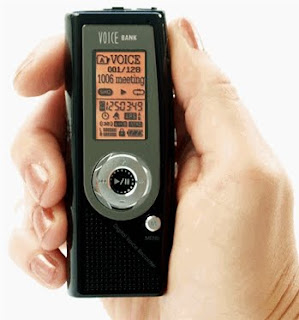
Windows Movie Maker

I used the Windows Movie Maker package for my evaluation as it allowed me to make short movies simply and with it already being installed into my laptop it came in very handy.
Adobe Photoshop
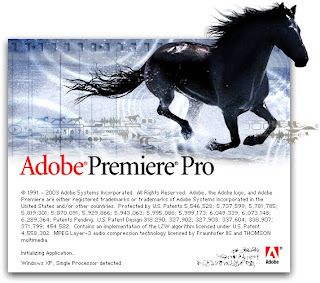
I used Adobe Photoshop when producing and editing the print advert. The way you can use layers was very convenient when producing the lettering for the title and slogan as i was able to label each layer which saved time when moving and resizing each letter. I was also able to duplicate layers when I wanted to use a letter more than once.
Adobe Premiere Pro

The Adobe Premiere Pro package was used to edit the whole of our documentary as it had all the tools needed which allowed us to add graphics, and import the filming easily, it also allowed us to add cutways and sound such as the voiceover and music.
Blogger

We used blogger in order to present all of our work and ideas, and to show our progress throughout making our final products. This presented our work in a productive way as it allows us to upload videos and images of our work.
Ice Radio Recording Suite

We used this suite to record our voiceover for our documentary and for our radio advert, it was very professional and allowed our final product to sound as effective as we would have liked.
The InternetThe internet came in very useful when conducting research for our documentary. It was also needed for us to access blogger and for us to download to music we had chosen to put into our documentary and radio advert. We also found the internet useful when looking for archive footage.
Microsoft Powerpoint

I used powerpoint when completing my questionnaire as it allowed me to present my ideas in a more interesting way. I also feel it gives my work a more professional feel, therefore it came in useful.
New Media Technologies
New media technologies have developed greatly over time which has allowed us to experiment more freely and confidently with them to produce for ever changing products. New technologies have been very helpful in the production of our documentary as they have allowed us to edit professionally, thus making our documentary seem like it is more for real media institutions. Without new technologies our product would not of been as professional or high in quality that we hoped to achieve.
Interactive documentaries are very rare today but this is due to the new technologies that allow producers to not include the camera and crew in the recording shots. Without the development in new technologies then this type of documentary may be used on a wider scale than it is today.


